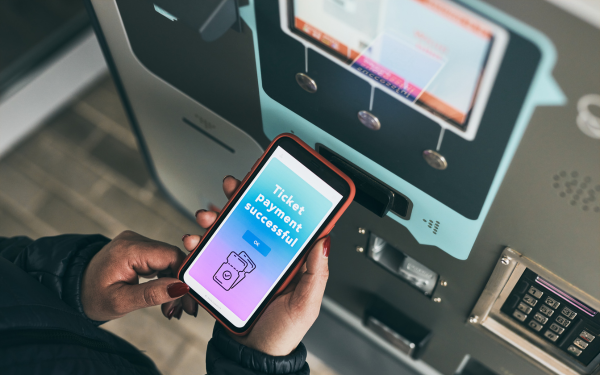Self-service kiosks in ticketing
In today’s fast-paced world, convenience and efficiency are paramount. Whether it’s purchasing tickets for a concert, a sporting event, or a movie, waiting in long queues can be frustrating and time-consuming. This is where self-service ticketing kiosks come to the rescue. Self-service kiosks have revolutionised the ticketing industry, providing customers with a seamless and hassle-free experience. By empowering customers to purchase tickets on their own, these kiosks have transformed the way we buy tickets. In this article, we will explore the benefits of self-service kiosks specifically for ticketing, how they work, and best practices for implementing them.
The benefits of self-service kiosks for ticketing
Self-service ticketing kiosks offer numerous benefits for both customers and businesses. For customers, the most obvious advantage is the convenience they provide. Instead of waiting in long queues, customers can simply approach a kiosk, select their desired tickets, make the payment, and receive their tickets or perhaps they are more intended for entry to a venue, in which case the customer scans their already printed ticket or QR / barcode and away they go. This not only saves time but also reduces the frustration associated with waiting in line. Moreover, self-service kiosks are available 24/7, allowing customers to purchase tickets at their convenience, even outside of regular business hours.
From a business perspective, self-service ticketing kiosks offer cost savings and increased efficiency. By automating the ticketing process, businesses can reduce the need for manual ticket sales and allocate their staff to other important tasks. Additionally, self-service kiosks can handle a large number of transactions simultaneously, ensuring that customers are served quickly and efficiently. This leads to shorter wait times, improved customer satisfaction, and increased revenue for businesses.
Best practices for implementing self-service ticketing kiosks
Implementing self-service ticketing kiosks requires careful planning and execution. Here are some best practices to consider:
- Location is key : Place the kiosks in high-traffic areas, such as entry gates, lobbies, or near ticket counters, to maximise visibility and accessibility.
- Clear instructions: Ensure that the kiosks have clear and concise instructions to guide customers through the ticket purchasing process. Use visual cues, such as icons and graphics, to make the instructions easily understandable.
- Responsive design: Opt for a responsive design that adapts to various screen sizes, making it accessible to customers with different devices, such as smartphones or tablets.
- Regular maintenance: Regularly check and maintain the kiosks to ensure they are functioning properly. This includes keeping the touchscreen clean, replenishing ticket stock, and troubleshooting any technical issues promptly.
- Staff assistance: Have staff members available nearby to assist customers who may require help or encounter difficulties during the ticketing process. This ensures a positive customer experience and promotes customer satisfaction.
Tips for optimising the user experience of self-service ticketing kiosks
To enhance the user experience of self-service ticketing kiosks, consider the following tips:
- Intuitive interface: Design a user-friendly interface that is easy to navigate and understand, even for customers who are not tech-savvy. Use simple language and clear visuals to guide customers through each step.
- Streamlined process: Keep the ticket purchasing process as simple and straightforward as possible. Minimise the number of steps required and avoid asking for unnecessary information that may deter customers from completing the transaction.
- Error prevention: Implement error prevention measures, such as real-time validation of inputted information, to minimise user errors and ensure accurate ticket purchases.
- Multiple language support: If your target audience includes non-English speakers, consider offering multiple language options on the kiosk interface. This will make the ticket purchasing process more inclusive and accessible to a wider range of customers.
- Feedback collection: Provide customers with the option to provide feedback on their experience with the self-service ticketing kiosk. This valuable feedback can help identify areas for improvement and enhance future iterations of the kiosks.
Cost considerations for implementing self-service ticketing kiosks
While self-service ticketing kiosks offer numerous benefits, it is essential to consider the cost implications of implementing them. Factors to consider include the initial investment in purchasing or leasing the kiosks, installation costs, ongoing maintenance and support fees, and any necessary upgrades or software updates. However, it is important to note that the long-term cost savings and increased revenue generated by self-service ticketing kiosks often outweigh the initial investment.
By implementing best practices and optimising the user experience, businesses can ensure a seamless ticket purchasing process for their customers. As technology continues to evolve, self-service ticketing kiosks will only become more advanced, offering exciting features and enhancing the overall ticketing experience. Embrace the future of ticketing by integrating self-service kiosks into your business and revolutionise the way you sell tickets.
View our full self-service kiosk range here.
For further information, stock availability or anything else please contact us today.
📧: salesUK@advantech-aures.com
📞: 01928 599 966




